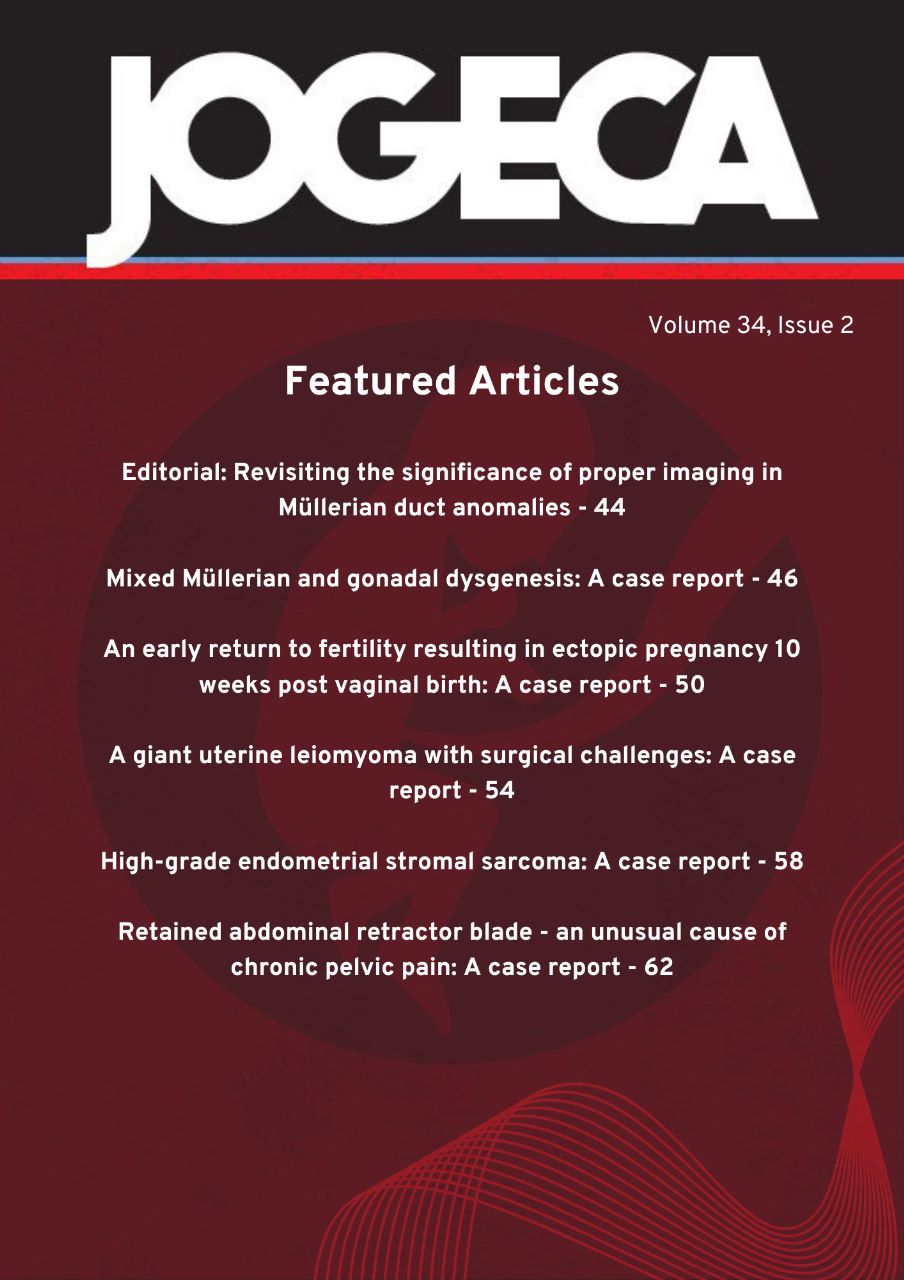PREVALENCE BY CRITERION BASIS FOR POLYCYSTIC OVARY SYNDROME AMONG WOMEN PRESENTING WITH AMENORRHEA AND OLIGOMENORRHEA AT THE KENYATTA NATIONAL HOSPITAL IN 2018
DOI:
https://doi.org/10.59692/jogeca.v32i1.202Keywords:
Polycystic ovary syndrome, oligomenorrhea, amenorrhea, criteriaAbstract
Background: Polycystic ovary syndrome (PCOS) is the commonest endocrinological condition associated with anovulatory infertility in women. Worldwide, the prevalence is highly variable, ranging from 2.2% to as high as 26%. Similarly, the prevalence of PCOS is variable in Africa, occurring in about 1 in 6 infertile Nigerian women and 32% of infertile women in Tanzania. The variable prevalence could be attributable to multiplicity of diagnostic criteria, and similarity in presentation with other syndromes that present with amenorrhea and the population studied.
Objectives: To determine the prevalence by criterion basis of PCOS among women with amenorrhea and oligomenorrhea attending the Kenyatta National Hospital in 2018.
Methodology: This was a descriptive cross sectional study. The study population comprised of 131 women recruited at Kenyatta National Hospital gynecology department. Those enrolled, gave an informed consent, filled a questionnaire, had their anthropometric measurements taken, then underwent a pelvic ultrasound scan and a blood sample for serum free testosterone levels was taken. PCOS was determined using the Rotterdam 2003, the NIH 1990 and the AE-PCOS 2006 criteria.
Results: PCOS was diagnosed in 49(37%) using the Rotterdam criteria, 26(20%) using the NIH 1990 criteria and 15(12%) using the AE-PCOS 2006 criteria.
Conclusion: When the Rotterdam criteria is used, the prevalence is highest, followed by the NIH 1990 and lastly the AE-PCOS 2006.
Recommendation: The Rotterdam criteria for diagnosis of PCOS should be used as it more representative.
Downloads
Published
How to Cite
Issue
Section
Categories
License
Copyright (c) 2020 The Authors.

This work is licensed under a Creative Commons Attribution 4.0 International License.




